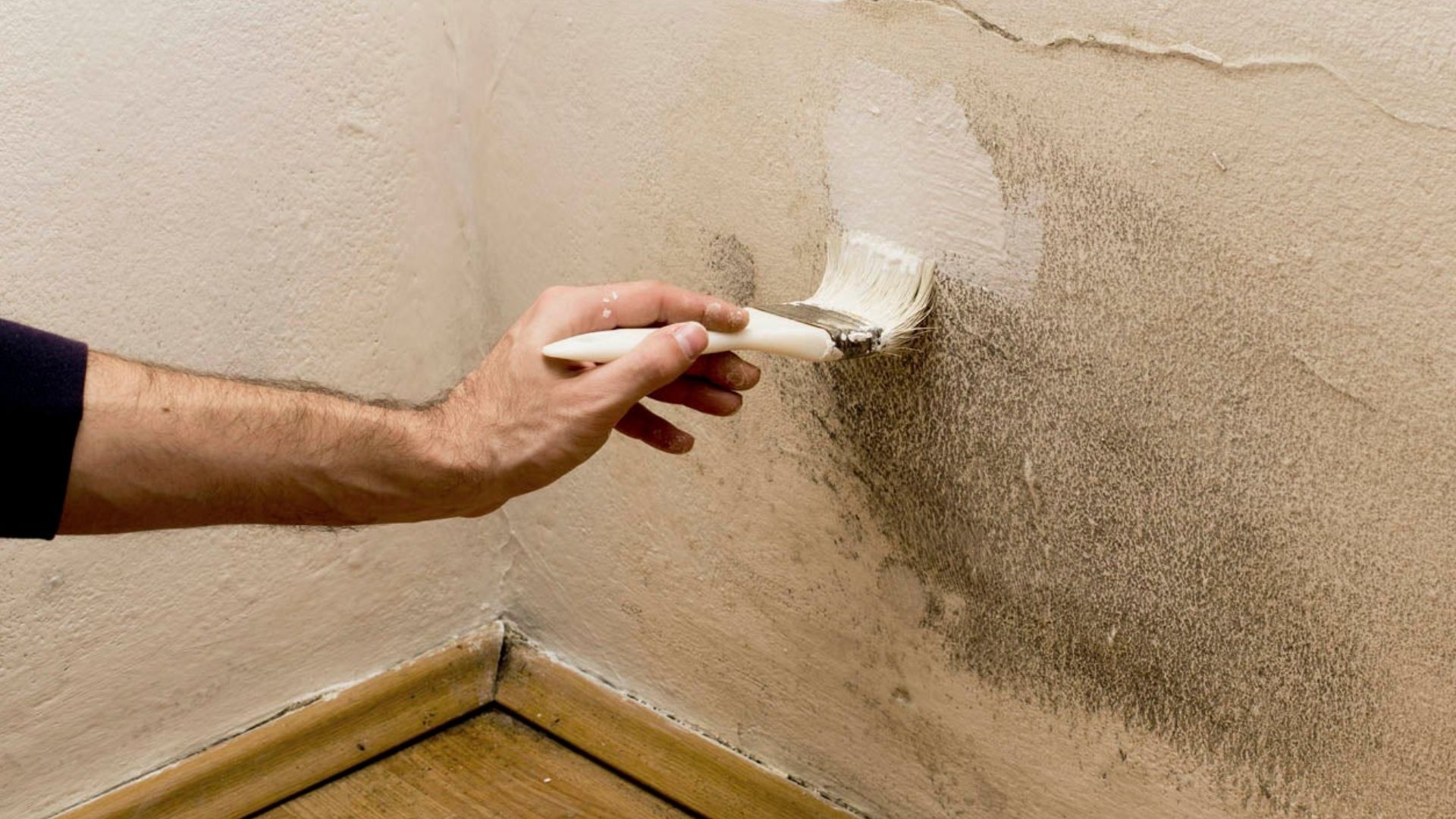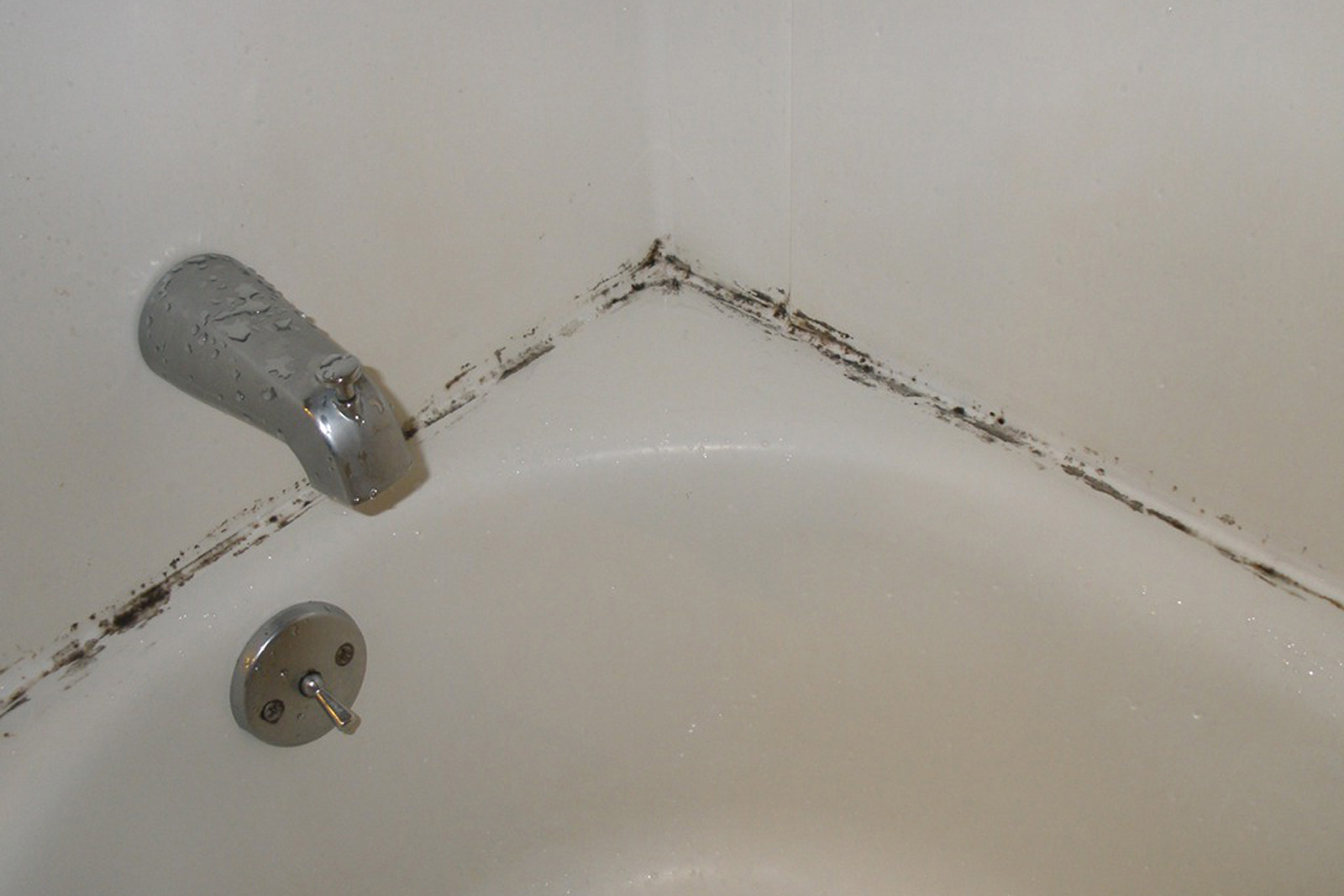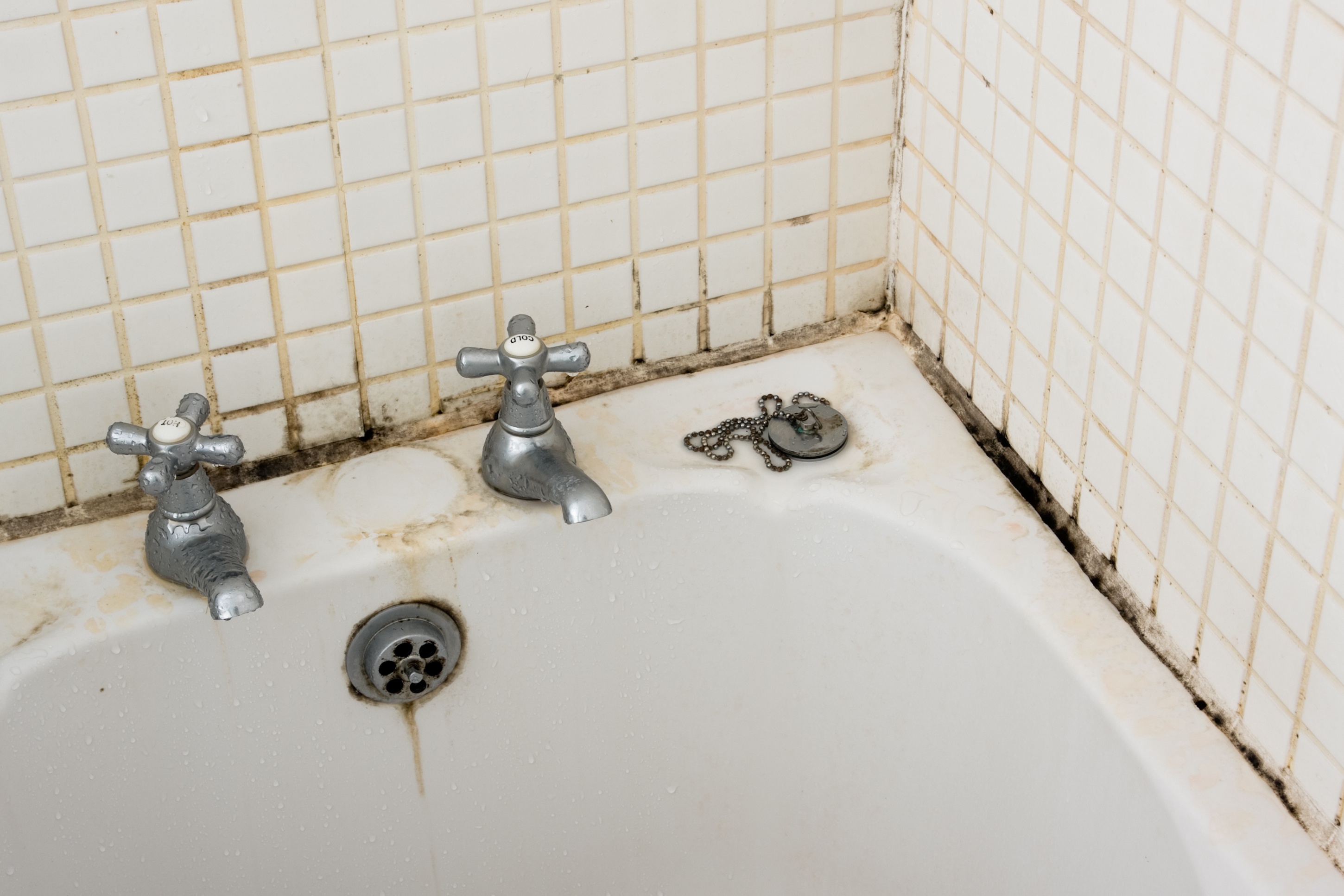Understanding Mould Growth in Bathrooms

Bathrooms are particularly susceptible to mould growth due to their inherent dampness and frequent exposure to water. The combination of moisture, warmth, and lack of proper ventilation creates an ideal breeding ground for mould spores.
Conditions Promoting Mould Growth
Mould thrives in environments with high humidity levels. Bathrooms, with their constant exposure to water from showers, baths, and sinks, often experience high humidity. This excess moisture provides a suitable environment for mould spores to germinate and proliferate.
- Humidity: The ideal humidity level for a bathroom is between 30% and 50%. However, after showering or bathing, humidity levels can quickly rise to 70% or higher. This excess moisture provides an ideal environment for mould spores to germinate and grow.
- Moisture: Leaking pipes, condensation from showers, and even spilled water can create areas of persistent moisture, providing a constant source of sustenance for mould.
- Poor Ventilation: Inadequate ventilation traps moisture inside the bathroom, creating a humid environment conducive to mould growth. Exhaust fans should be used during and after showers to remove moisture from the air.
Types of Mould in Bathrooms
Several types of mould commonly infest bathrooms, each posing different health risks.
- Black Mould (Stachybotrys chartarum): This type of mould is particularly dangerous as it can produce mycotoxins, which are harmful chemicals that can cause respiratory problems, allergies, and even neurological issues. It often appears black or dark green and is typically found in damp areas, such as behind shower curtains or under sinks.
- Alternaria: This common mould is found in bathrooms and can cause allergic reactions, asthma, and other respiratory problems. It appears as dark green or black patches and can grow on surfaces such as walls, ceilings, and shower curtains.
- Cladosporium: Another common type of mould, Cladosporium, can cause allergic reactions, asthma, and other respiratory problems. It appears as dark green or brown patches and can grow on surfaces such as walls, ceilings, and shower curtains.
- Penicillium: This type of mould is known for its distinctive blue-green colour and is often found in damp areas, such as around windows and under sinks. It can cause allergic reactions, asthma, and other respiratory problems.
- Aspergillus: This type of mould is found in bathrooms and can cause allergic reactions, asthma, and other respiratory problems. It appears as yellow, green, or black patches and can grow on surfaces such as walls, ceilings, and shower curtains.
Identifying and Assessing Mould Growth
Recognizing mould growth early is crucial to prevent further damage and health risks.
- Visual Inspection: Look for discolouration on walls, ceilings, grout, and other surfaces. Mould often appears as dark spots, patches, or fuzzy growths.
- Smell: Mould often has a musty or earthy odour. If you notice an unusual smell, it could indicate the presence of mould.
- Touch: Avoid touching mould with bare hands. If you suspect mould, use a damp cloth to wipe the affected area and dispose of the cloth carefully.
- Severity Assessment: Assess the extent of the mould growth. Small, isolated patches may be treatable with home remedies. However, large areas of mould growth or mould growth in hidden areas may require professional intervention.
Choosing the Right Paint for Mould Coverage: Paint To Cover Mould In Bathroom

Selecting the appropriate paint is crucial for effectively covering mould and preventing its recurrence in your bathroom. Mould-resistant paints offer superior protection against moisture and fungal growth compared to standard paints.
Types of Mould-Resistant Paints
Choosing the right paint for your bathroom involves considering the paint’s properties, application methods, and effectiveness. Here are some common types of mould-resistant paints:
- Acrylic Paints: Acrylic paints are a popular choice for bathrooms due to their durability, water resistance, and ease of application. They are available in a wide range of colours and finishes. Acrylic paints typically have good mould resistance, but for high-moisture areas, consider choosing a paint specifically formulated for mould resistance.
- Epoxy Paints: Epoxy paints offer excellent adhesion, durability, and resistance to moisture, making them suitable for high-traffic areas like bathrooms. They are often used on floors and walls, forming a hard, non-porous surface that is resistant to mould growth.
- Latex Paints: Latex paints are another common option for bathrooms. They are water-based, making them easy to clean and low-VOC (volatile organic compound). Latex paints can be mildew-resistant, but for areas prone to heavy moisture, choose a paint specifically formulated for mould resistance.
- Oil-Based Paints: Oil-based paints offer excellent durability and water resistance, making them a good choice for high-moisture areas. However, they have a strong odour and take longer to dry than water-based paints. Additionally, they are not as environmentally friendly as water-based paints.
Choosing the Right Paint Finish, Paint to cover mould in bathroom
The paint finish you choose can significantly impact the overall appearance and functionality of your bathroom. Here are some considerations for selecting the appropriate finish:
- Matte Finish: Matte finishes provide a flat, non-reflective surface, making them ideal for hiding imperfections and creating a soft, warm ambiance. However, they are more prone to staining and require more frequent cleaning.
- Eggshell Finish: Eggshell finishes offer a slightly more sheen than matte finishes, providing a subtle sheen that helps to reflect light. They are easier to clean than matte finishes and are a good option for areas that receive moderate traffic.
- Satin Finish: Satin finishes have a more pronounced sheen than eggshell finishes, making them easier to clean and more resistant to stains. They are a good choice for areas that receive heavy traffic, such as shower stalls and tub surrounds.
- Semi-Gloss Finish: Semi-gloss finishes offer a high sheen that reflects light and makes them easy to clean. They are often used in areas that require frequent cleaning, such as shower stalls and tub surrounds.
- Gloss Finish: Gloss finishes have the highest sheen, making them the easiest to clean and most resistant to stains. They are often used in areas that receive heavy traffic and require frequent cleaning.
Using a Mould-Resistant Primer
Before applying mould-resistant paint, it is essential to use a primer specifically designed for mould-prone surfaces. A primer serves as a barrier between the surface and the paint, helping to prevent mould growth and improve the paint’s adhesion. Mould-resistant primers contain fungicides that inhibit mould growth, providing an extra layer of protection.
Applying a mould-resistant primer is essential for creating a clean and durable surface for the paint to adhere to.
Preparing the Surface and Applying Paint

A well-prepared surface is crucial for achieving a durable and effective paint finish that will prevent mould from reappearing. This involves thorough cleaning, sanding, and patching to create a smooth and even surface for the paint to adhere to. Proper application techniques are also essential for ensuring the paint covers the mould completely and provides long-lasting protection.
Cleaning the Bathroom Surface
Before applying paint, it is essential to clean the bathroom surface thoroughly to remove any dirt, grime, soap scum, or loose paint. This will allow the paint to adhere properly and prevent mould from growing back.
- Remove loose paint or mould: Use a scraper or putty knife to remove any loose paint or mould from the surface. Be careful not to damage the underlying surface.
- Clean the surface with a mildewcide solution: Mix a solution of water and a mildewcide cleaner according to the product instructions. Apply the solution to the affected areas using a sponge or cloth and allow it to sit for 10-15 minutes. Rinse the surface thoroughly with water and allow it to dry completely.
- Wash the surface with a mild detergent: After cleaning with mildewcide, wash the surface with a mild detergent and water to remove any remaining residue. Rinse the surface thoroughly and allow it to dry completely.
Sanding the Surface
Sanding the surface will create a smooth and even surface for the paint to adhere to. This will help prevent the paint from cracking or peeling and will improve the overall appearance of the paint job.
- Sand the surface with fine-grit sandpaper: Use fine-grit sandpaper (120-180 grit) to sand down any rough areas or imperfections. Sand in a circular motion, applying light pressure to avoid damaging the surface.
- Remove sanding dust: After sanding, use a damp cloth or vacuum cleaner to remove all sanding dust. This will ensure that the paint adheres properly to the surface.
Patching the Surface
If there are any holes or cracks in the surface, you will need to patch them before painting. This will create a smooth and even surface for the paint to adhere to.
- Use a patching compound: Apply a patching compound to the holes or cracks using a putty knife. Smooth the compound over the surface and allow it to dry completely according to the manufacturer’s instructions.
- Sand the patched areas: After the patching compound has dried, sand the patched areas with fine-grit sandpaper to create a smooth and even surface.
Applying Mould-Resistant Paint
Once the surface is prepared, you can apply the mould-resistant paint. It is important to choose the right type of paint for the bathroom, as it will be exposed to moisture and humidity.
- Use a brush, roller, or sprayer: You can apply mould-resistant paint using a brush, roller, or sprayer. A brush is best for small areas or hard-to-reach corners, while a roller is ideal for large surfaces. A sprayer can be used for large areas, but it is important to use it in a well-ventilated area and wear a mask to protect yourself from paint fumes.
- Apply thin coats: Apply thin coats of paint to ensure proper coverage and prevent the paint from dripping or running. Allow each coat to dry completely before applying the next coat. Most mould-resistant paints require two coats for full coverage.
- Use a paint scraper: Use a paint scraper to remove any excess paint from the surface. This will help to create a smooth and even finish.
Achieving a Smooth and Even Paint Finish
To achieve a smooth and even paint finish, it is important to apply the paint in a consistent manner and allow each coat to dry completely before applying the next.
- Use a paint brush or roller with a good quality nap: A good quality paint brush or roller will help to ensure that the paint is applied evenly and smoothly. A longer nap will help to cover imperfections in the surface.
- Apply the paint in thin coats: Apply the paint in thin coats, working in sections. Allow each coat to dry completely before applying the next coat.
- Avoid overworking the paint: Overworking the paint can cause it to become streaky or uneven. Once you have applied a coat of paint, try to avoid going back over it too much.
- Use a paint scraper to remove any excess paint: Use a paint scraper to remove any excess paint from the surface. This will help to create a smooth and even finish.
